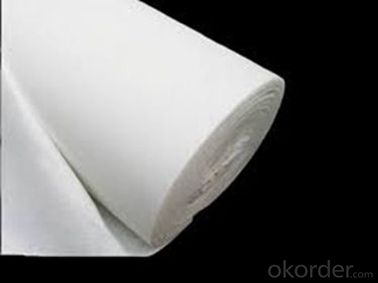- Understanding the Role of Geomembrane Liners in Waste Management
- Innovations in Geomembrane Liners for Water Management
- Geomembrane Liners: A Comprehensive Guide
- The Future of Geomembrane Liners in Civil Engineering
- Geomembrane Liners: Enhancing Landfill Stability
Manager:
WhatsApp:+86 177 0135 2670
Tel:+86 177 0135 2670
Email:marketing@okorder.com
Address:3rd Floor, No.2 Building, No.1 Sanlihe Road
HDPE Geomembranes: A Durable Solution for Pond Waterproofing
When it comes to pond waterproofing, the search for a durable and reliable solution is paramount. Ponds are not just aesthetic features in our landscapes, but they also serve as habitats for various aquatic life and contribute to the overall ecosystem. A pond liner is essential to prevent water seepage and maintain the pond's integrity. In this article, we will explore the use of hdpe Geomembranes as a superior option for pond waterproofing, delving into their benefits, installation process, and maintenance tips.

The Versatility of HDPE Geomembranes
High-Density Polyethylene (HDPE) geomembranes are a type of synthetic material known for their strength, durability, and flexibility. These membranes are made from a single piece of plastic, which makes them seamless and less prone to leaks compared to other materials. HDPE is also resistant to UV radiation, chemicals, and temperature fluctuations, making it an ideal choice for outdoor applications like pond lining.
Why Choose HDPE for Pond Waterproofing?
1. Longevity: HDPE geomembranes are designed to last for decades without losing their effectiveness. This means that once installed, you can enjoy a leak-free pond for many years to come.
2. Low Maintenance: With HDPE, the upkeep is minimal. It doesn't require frequent inspections or replacements, saving you time and money in the long run.
3. Eco-Friendly: HDPE is a recyclable material, making it a more environmentally friendly option compared to other non-recyclable pond liners.
4. Resistance to Damage: These geomembranes can withstand punctures, tears, and abrasions, ensuring that your pond remains secure and intact.
5. Customizability: HDPE can be tailored to fit the unique shape and size of your pond, providing a perfect fit every time.
The Installation Process
Setting up an HDPE geomembrane for your pond involves several steps, but don't worry—it's not as daunting as it sounds. Here's a simplified breakdown of the process:
1. Preparation: Start by preparing the pond's base. Remove any debris, rocks, or sharp objects that could potentially damage the geomembrane.
2. Measuring and Cutting: Measure the dimensions of your pond and cut the HDPE geomembrane accordingly, leaving extra material for seams and overlaps.
3. Seaming: Use a heat-welding technique to join the pieces together, creating a strong bond that prevents leaks.
4. Laying the Membrane: Carefully lay the geomembrane over the pond's base, ensuring it's smooth and free of wrinkles or folds.
5. Securing the Edges: Anchor the edges of the geomembrane using weights, such as stones or sandbags, to keep it in place.
6. Final Inspection: Conduct a thorough inspection to ensure there are no leaks or defects in the installation.
Maintenance and Care
Proper maintenance is crucial to prolong the life of your HDPE geomembrane. Here are some tips to help you keep it in top condition:
1. Regular Inspections: Periodically check the geomembrane for any signs of wear or damage. Early detection can prevent small issues from becoming bigger problems.
2. Cleaning: Keep the surface clean by removing debris, leaves, and other materials that could potentially scratch or damage the geomembrane.
3. Protection from UV: Although HDPE is resistant to UV radiation, it's still a good idea to provide some shade during the hottest parts of the day to protect the geomembrane from prolonged exposure.
4. Avoiding Sharp Objects: Be cautious when using tools or equipment near the pond to avoid accidental punctures or tears in the geomembrane.
The Benefits of a Well-Maintained Pond
A well-maintained pond not only looks great but also provides numerous benefits to the environment and the creatures that call it home. Here's why a properly waterproofed pond matters:
1. Habitat Preservation: A secure pond ensures that the aquatic life within it has a stable and safe environment to thrive in.
2. Ecosystem Balance: Ponds play a vital role in maintaining the balance of local ecosystems, supporting a diverse range of plant and animal species.
3. Aesthetic Appeal: A beautiful, well-maintained pond can significantly enhance the visual appeal of your landscape.
4. Recreational Opportunities: Ponds offer opportunities for fishing, bird-watching, and other outdoor activities, enriching your lifestyle.
Wrapping Up
In conclusion, HDPE geomembranes offer a durable, low-maintenance, and eco-friendly solution for pond waterproofing. By understanding the benefits, installation process, and maintenance tips, you can ensure that your pond remains a beautiful and functional feature of your landscape for years to come. So, if you're looking to create or maintain a pond, consider HDPE geomembranes as your go-to choice for a reliable and long-lasting waterproofing solution.
- Previous:HDPE Geomembranes: The Choice for Large-Scale Pond Lining
- Next:HDPE Geomembranes: The Essential Tool for Environmental Engineers






